Potřebujeme váš souhlas k využití jednotlivých dat, aby se vám mimo jiné mohly ukazovat informace týkající se vašich zájmů. Souhlas udělíte kliknutím na tlačítko „OK“.
ASTM D3827-92(2012)
Standard Test Method for Estimation of Solubility of Gases in Petroleum and Other Organic Liquids
Automaticky přeložený název:
Standardní zkušební metoda pro odhad rozpustnost plynů v ropné a ostatní organické kapaliny
NORMA vydána dne 15.4.2012
Informace o normě:
Označení normy: ASTM D3827-92(2012)
Poznámka: NEPLATNÁ
Datum vydání normy: 15.4.2012
Kód zboží: NS-25007
Počet stran: 4
Přibližná hmotnost: 12 g (0.03 liber)
Země: Americká technická norma
Kategorie: Technické normy ASTM
Kategorie - podobné normy:
Anotace textu normy ASTM D3827-92(2012) :
Keywords:
gases, liquids, organic liquids, petroleum liquids, solubility, Distillate fuels, Gases, Gas solubility, Lubricants (fluid), Organic liquids, Ostwald coefficient, Petroleum products (liquid), Solubility, Synthetic fluids, ICS Number Code 75.040 (Crude petroleum)
Doplňující informace
| Significance and Use | ||||||||||
|
Knowledge of gas solubility is of extreme importance in the lubrication of gas compressors. It is believed to be a substantial factor in boundary lubrication, where the sudden release of dissolved gas may cause cavitation erosion, or even collapse of the fluid film. In hydraulic and seal oils, gas dissolved at high pressure can cause excessive foaming on release of the pressure. In aviation oils and fuels, the difference in pressure between take-off and cruise altitude can cause foaming in storage vessels and interrupt flow to pumps. |
||||||||||
| 1. Scope | ||||||||||
|
1.1 This test method covers a procedure for estimating the equilibrium solubility of several common gases in petroleum and synthetic lubricants, fuels, and solvents, at temperatures between 0 and 488 K. 1.2 This test method is limited to systems in which polarity and hydrogen bonding are not strong enough to cause serious deviations from regularity. Specifically excluded are such gases as HCl, NH3, and SO2, and hydroxy liquids such as alcohols, glycols, and water. Estimating the solubility of CO2 in nonhydrocarbons is also specifically excluded. 1.3 Highly aromatic oils such as diphenoxy phenylene ethers violate the stated accuracy above 363 K, at which point the estimate for nitrogen solubility is 43 % higher than the observation. 1.4 Lubricants are given preference in this test method to the extent that certain empirical factors were adjusted to the lubricant data. Estimates for distillate fuels are made from the lubricant estimates by a further set of empirical factors, and are less accurate. Estimates for halogenated solvents are made as if they were hydrocarbons, and are the least accurate of the three. 1.5 The values stated in SI units are to be regarded as the standard. The values in parentheses are for information only. 1.6 This standard does not purport to address all of the safety concerns, if any, associated with its use. It is the responsibility of the user of this standard to establish appropriate safety and health practices and determine the applicability of regulatory limitations prior to use. |
||||||||||
| 2. Referenced Documents | ||||||||||
|
Podobné normy:
Historická
1.10.2013
Historická
1.11.2012
Historická
1.5.2010
Historická
1.5.2010
Historická
1.1.2011
Historická
1.7.2011
Doporučujeme:
Aktualizace technických norem
Chcete mít jistotu, že používáte pouze platné technické normy?
Nabízíme Vám řešení, které Vám zajistí měsíční přehled o aktuálnosti norem, které používáte.
Chcete vědět více informací? Podívejte se na tuto stránku.


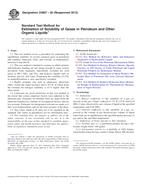
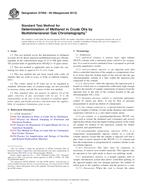 ASTM D7059-09(2013)..
ASTM D7059-09(2013)..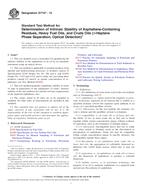 ASTM D7157-12
ASTM D7157-12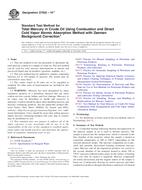 ASTM D7622-10e1
ASTM D7622-10e1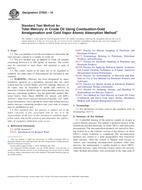 ASTM D7623-10
ASTM D7623-10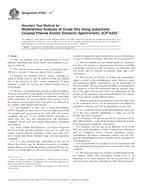 ASTM D7691-11e1
ASTM D7691-11e1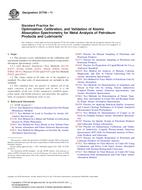 ASTM D7740-11
ASTM D7740-11
 Cookies
Cookies
